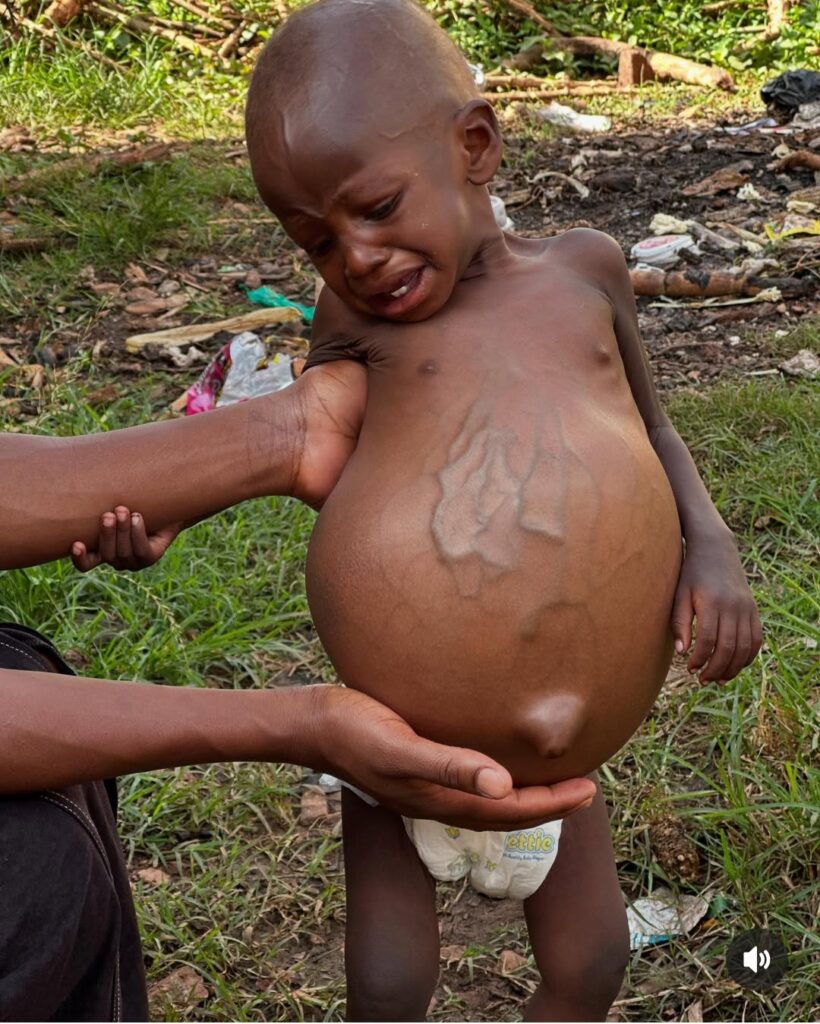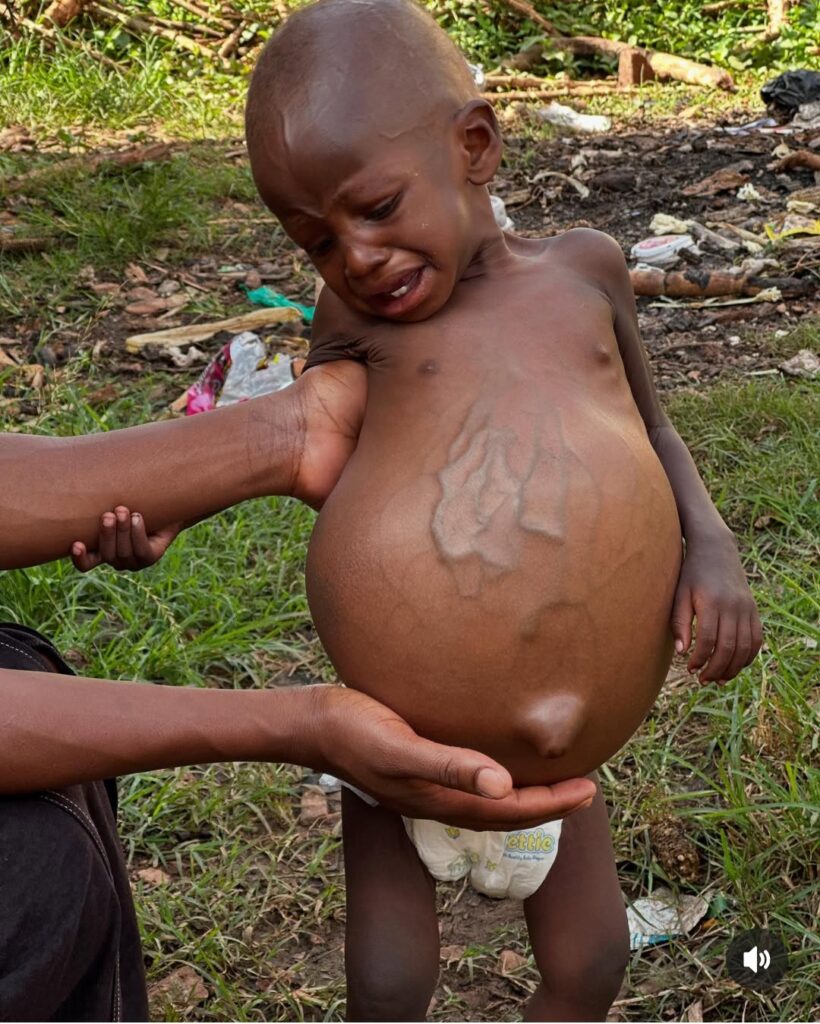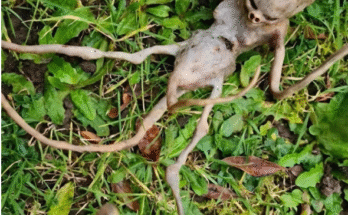
This heartbreaking photograph captures a malnourished child with a severely distended stomach, likely suffering from a medical condition such as kwashiorkor, a severe form of malnutrition caused by protein deficiency. The child appears to be in distress, crying as they are supported by an adult’s hands. The prominent veins on the swollen belly and the frail limbs suggest extreme undernourishment, highlighting the devastating effects of hunger and poverty.
The background of the image reveals an environment with scattered trash and unclean surroundings, indicating poor living conditions. The child’s thin frame and protruding ribs contrast sharply with the swollen abdomen, a hallmark symptom of severe malnutrition often seen in underprivileged communities lacking access to proper food, clean water, and medical care.
This image serves as a powerful and urgent call to address issues related to poverty, hunger, and healthcare in vulnerable populations. It underscores the importance of humanitarian aid, nutrition programs, and medical interventions to prevent and treat such conditions. The child’s suffering is a stark reminder of the ongoing global challenges of food insecurity and the urgent need for collective action to support affected communities.
Despite the pain evident in this photograph, the presence of the caring adult’s hands suggests a glimmer of hope—an effort to provide comfort, support, and possibly seek medical help. The image captures both the harsh reality of malnutrition and the resilience of those who continue to care for and advocate for children in need.

The child in the image appears to be suffering from kwashiorkor, a severe form of malnutrition caused by protein deficiency. This condition occurs when a child consumes enough carbohydrates (such as rice or maize) but lacks sufficient protein, which is essential for growth and cell development.
Symptoms of Kwashiorkor:
- Swollen abdomen due to fluid retention in the belly
- Thin limbs with muscle wasting
- Dry, peeling skin and brittle hair
- Fatigue, weakness, and irritability
- Slow growth and weight loss
- Weakened immune system, making infections more common
Children with kwashiorkor require urgent treatment, including a diet rich in protein, vitamins, and essential nutrients. If left untreated, the condition can lead to severe health complications or even death.
What Can Be Done to Help?
- Providing protein-rich foods (such as meat, beans, eggs, and dairy)
- Ensuring access to clean water and proper hygiene
- Seeking medical treatment and nutritional rehabilitation for affected children
- Supporting humanitarian aid programs that address malnutrition and food insecurity
This heartbreaking image is a stark reminder of the urgent need to combat child malnutrition through awareness, medical support, and global efforts to provide adequate nutrition to vulnerable communities.
In many impoverished regions, malnutrition remains a life-threatening issue, affecting millions of children. The child in this image is a heartbreaking representation of the devastating effects of kwashiorkor, a severe protein deficiency that leads to swelling, muscle wasting, and weakened immunity. The frail limbs, protruding ribs, and swollen belly tell a painful story of hunger and suffering.
This child’s condition is not just a personal tragedy but a reflection of a broader crisis—one caused by food insecurity, poverty, and lack of medical care. In communities struggling with economic hardship and limited access to nutritious food, children often survive on starchy diets that provide calories but lack essential proteins and vitamins. Over time, their bodies begin to break down, leading to severe malnutrition and vulnerability to infections.
Despite these challenges, hope remains. Humanitarian organizations and medical professionals continue to work tirelessly to provide emergency nutrition, clean water, and healthcare. By raising awareness and supporting efforts to combat child hunger, individuals and organizations can help save lives.
This image serves as a call to action—a reminder that no child should suffer from hunger in a world with abundant resources. Every small effort, from donations to advocacy, can help ensure that children receive the nourishment they need to grow, thrive, and live a healthy life. The world must come together to fight malnutrition and build a future where no child is left behind.


